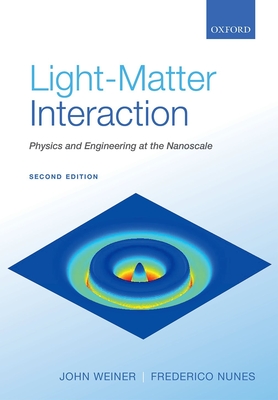You are here
Back to topLight-Matter Interaction: Physics and Engineering at the Nanoscale (Paperback)
$62.00
Email or call for price
Email or call for price
Description
Light-matter interaction is pervasive throughout the disciplines of optical and atomic physics, condensed matter physics, electrical engineering, and now increasingly in biology and medicine with frequency and length scales extending over many orders of magnitude. Deep earth and sea communications use frequencies of a few tens of Hz, and X-ray imaging requires sources oscillating at hundreds of petaHz. This book provides advanced undergraduates, graduate students and researchers from diverse disciplines with the principal tools required to understand and contribute to rapidly advancing developments in light-matter interaction, centred at optical frequencies and length scales from a few hundred nanometres to a few hundredths of a nanometre. This book deploys an arsenal of powerful analytic tools to render this multidisciplinary subject in unique form, not encountered in standard Physics or Electrical Engineering text books. This new edition has been substantially expanded with almost 200 pages of new material. Several new and extended chapters treat momentum flow between fields and matter, metamaterials, and atom-optical forces applied to atomic and molecular cooling and trapping.
About the Author
John Weiner, Professor (retired), Universite Paul Sabatier, Toulouse France, Frederico Nunes, Professor (retired), Federal University of Pernambuco John Weiner's doctoral work at the University of Chicago and subsequent post-doctoral work at Yale on crossed-beam ion-molecule collisions fixed his interest on how reactive collisions might be influenced by light fields. He established this line of research at the University of Maryland, where he was a full professor. Interaction between very slowly moving, cooled atoms in the presence of light gave rise to the field of "ultra-cold collisions," a subject Weiner vigorously pursued until he moved to the Universite Paul Sabatier in France in 1997. There he established a research group to study the trapping and transport of ultracold atoms in the presence of optical fields, themselves shaped by neighbouring nanostructures. In 2007 he retired from Universite Paul Sabatier and since then has been visiting professor in the physics institute at the Universidade de Sao Paulo, Brazil and a visiting fellow at the Centre for Nanoscale Science and Technology at NIST in Gaithersburg, Maryland. Professor Nunes was born in Recife, Pernambuco State, Brazil, in 1947. He obtained an undergraduate degree in electrical engineering from the School of Engineering at the Federal University of Pernambuco (UFPE) in 1971. He continued his advanced education by enrolling in the Physics and Pure Mathematics curriculum in the Institute of Professor Gleb Wataghin at the State University of Campinas (UNICAMP), obtaining his MS degree and PhD degrees in 1974 and 1977, respectively. Since then he has been on the faculty at several Brazilian universities and since 1997, he has been an Associate Professor at UFPE in Recife. He has received the Marechal Trompowski award for excellence in teaching at UFPE and has made many research contributions in the area of Optics, Semiconductors, Photonics and Nanoplasmonics. He has authored many scientific publications and holds a number of patents in the technologies associated with these scientific disciplines.
